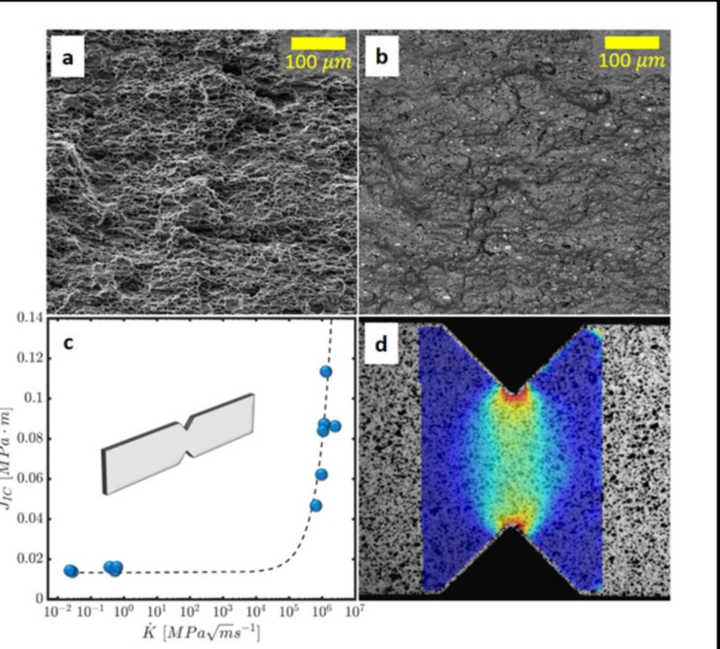
Abstract
Fracture toughness of a material depends on its microstructure and the imposed loading conditions. Intuitively, the resultant fracture surfaces must contain the information about the interlacing of these intrinsic (microstructure) and extrinsic (imposed loading) characteristics. Mandelbrot’s revelation that fracture surfaces are fractals, excited both the scientific and engineering communities, spurring a series of works focused at correlating the fracture toughness and the fracture surface roughness. Unfortunately, these studies remained inconclusive and later on it was shown that the fractal dimension of the fracture surface roughness is in fact universal. Here, we show that by going beyond the universality, a definite correlation between the fracture toughness and indices of the fracture surface roughness is obtained. To this end, fracture experiments on an aluminum alloy were carried over a wide range of loading rates (10−2–106 MPa √ ms−1), and the resulting fracture surface were reconstructed using stereography. The correlation lengths, extracted from the reconstructed surfaces, were found to be linearly correlated with the measured fracture toughness. The correlation unraveled in our work, along with the proposed mechanistic interpretation, revives the hope of correlating fracture toughness and fracture surface roughness, allowing quantitative failure analysis and a potential reconstructive approaches to designing fracture resistant materials.